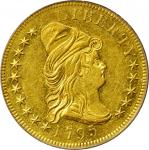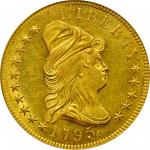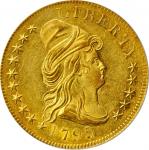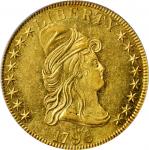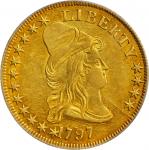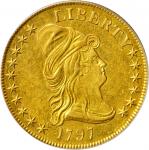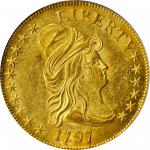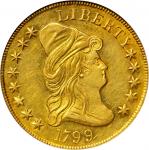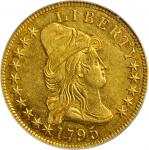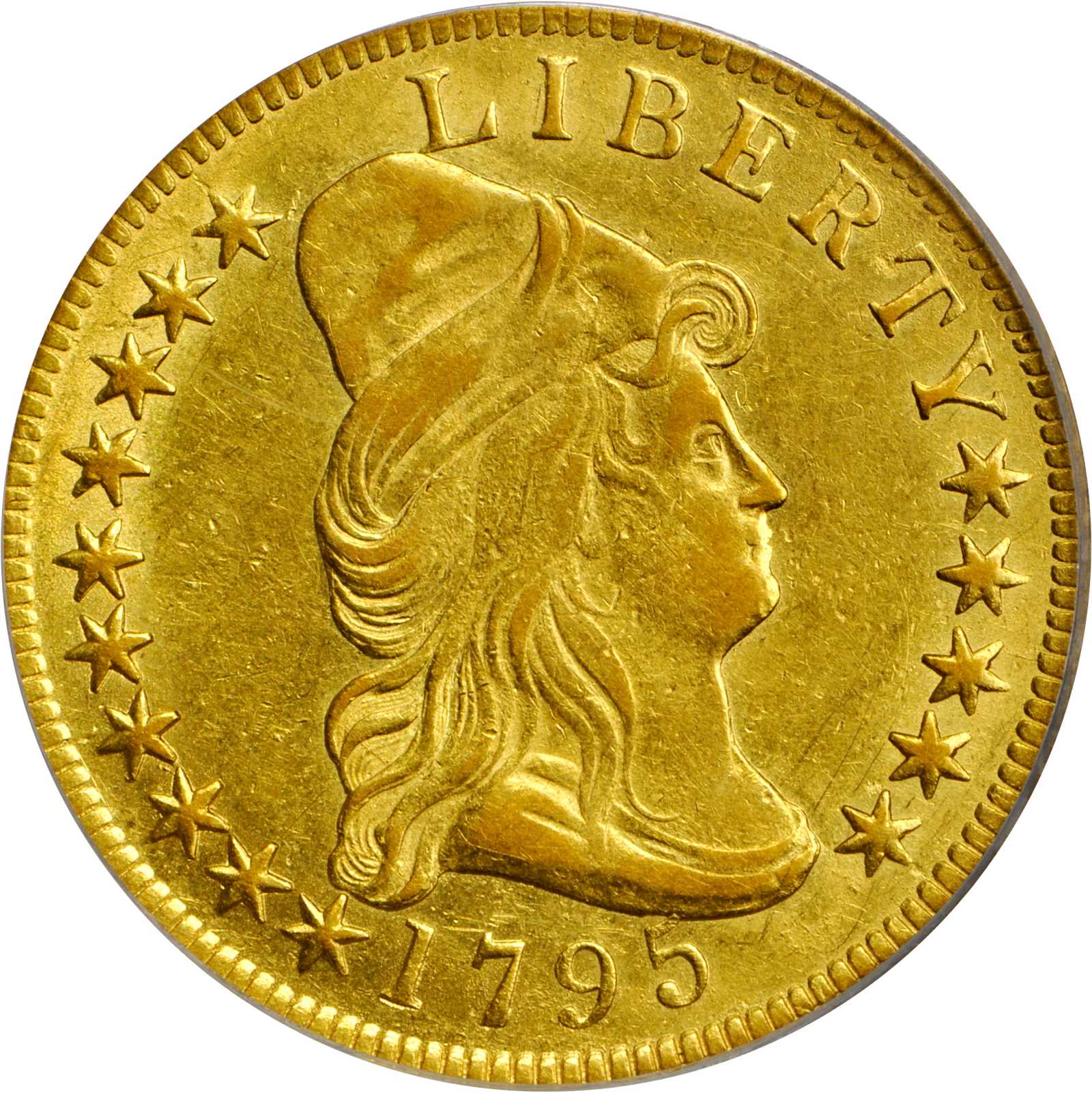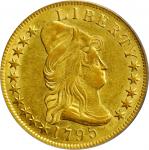1795 Capped Bust Right Eagle. BD-2, Taraszka-2. Rarity-4+. 13 Leaves. EF-45 (PCGS). CAC.Type and Style: Type I: Capped Bust Right, Small Eagle. Style I: Head of 1795 with 15 stars arranged 10 left, five right; Reverse of 1795 with 13 leaves on the palm branch. The head and eagle punches are attributed to hubs prepared by Robert Scot.Die Variety: BD-2, Taraszka-2, Breen 2-A, HBCC-3170. Obverse diagnostics include Libertys bust over the tip of the digit 5 in the date and star 11 away from the letter Y in LIBERTY. The reverse is most readily identifiable by looking at the eighth leaf on the palm branch, which nearly touches the letter U in UNITED. This variety represents the first of three uses for this obverse die, which was later used to produce the scarce BD-3, Taraszka-3 9 Leaves variety, as well as the BD-5, Taraszka-5 13 Leaves variety. BD-2, Taraszka-2 represents the second and final use of this reverse die.Die State: BD Die State a/d. The obverse die state is perfect with neither cracks nor evidence of lapping. The reverse is the only die state known for the BD-2 attribution, and it has been lapped to efface clash marks. The field areas between the palm leaves are now wider, as is that between the eagles legs, and the tops of the letters ED in UNITED are incomplete. Interestingly, there are no examples of Reverse Die State c known for either the BD-1 or BD-2 varieties, although Dannreuther asserts that the clashing likely occurred late in the press run for the BD-1 variety. The clashing likely caused fatal injury to the obverse die, forcing its retirement, but the reverse was lapped and mated with a new obverse to produce the BD-2 variety. As with so many early U.S. Mint gold coin varieties, the paucity of surviving examples precludes definitive work on die states. Terminal die state coins have not survived (or have yet to be attributed) for many early eagle varieties, although they are suspected since Mint personnel would have used the dies until they failed.Estimated Mintage for the Issue: Most Capped Bust Right, Small Eagle tens were struck from 1795-dated dies. The mintage for calendar year 1795 is 5,583 coins, per Mint records. Dannreuther provides an estimate of coins struck from 1795-dated dies that ranges from a low of 5,859 to a high of 10,915 pieces.Estimated Mintage for the Variety: Dannreuther estimates that 1,500 to 2,332 eagles were struck from the 1795 BD-2 die marriage.Estimated Surviving Population for the Variety: Approximately 100 examples are believed extant in all grades (per Dannreuther).Strike: Lightly worn overall, predominantly on the high points, this coin retains the sharpest detail in the recesses of the design. All major design elements are bold, nonetheless, and the denticulation is uniform around both sides from a well centered strike.Surfaces: Handsome medium gold surfaces retain ample satin luster. The appearance is smooth and appealing, so much so that we are hard pressed to find useful identifying features. Closer inspection reveals a tiny nick in the reverse field above the eagles right wing that, when taken in conjunction with a few other equally minuscule handling marks, confirms this coins provenance per the images in print.Commentary: Although BD-2 is the only other readily collectable variety of the 1795 eagle, examples are more than twice as scarce as those of the BD-1 die pairing. The present example is an excellent candidate to represent this challenging early gold series in an advanced type set or specialized collection.From the Anthony J. Taraszka Collection. Earlier from our (Stacks) sale of September 1998, lot 1850. The plate coin for the die variety in the book United States Ten Dollar Gold Eagles: 1795-1804 by Anthony J. Taraszka.

